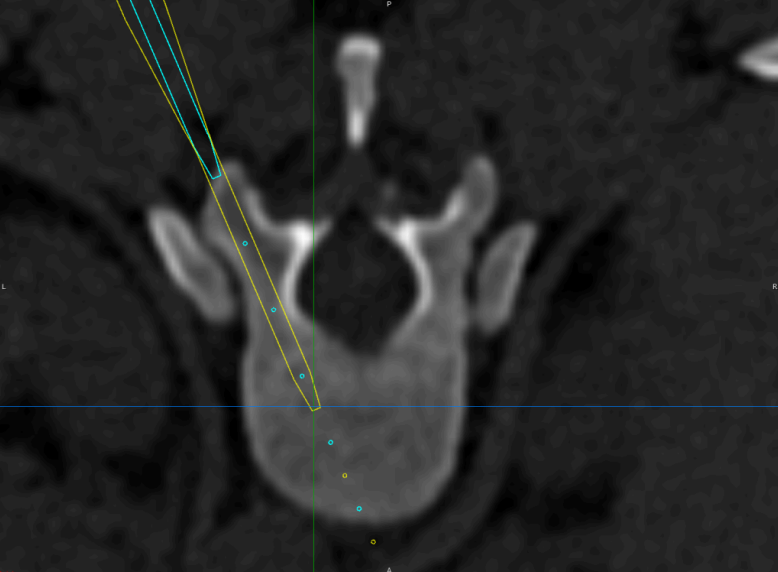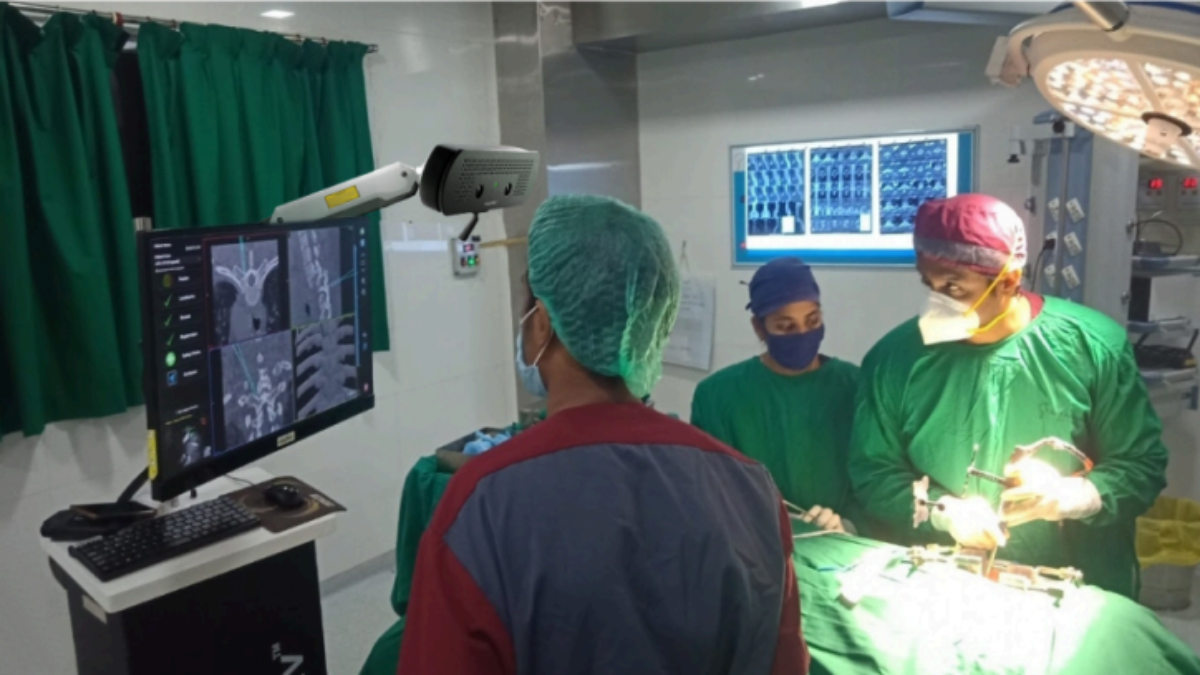To confidently perform a spinal fusion and screw fixation with excellence surgical navigation is consistently used as a powerful tool. Surgical Navigation provides real-time guidance and precise measurements for accurately placing the pedicle screws to help stabilize the spine. A preoperative CT scan gives a detailed visualization of the structure decreasing the potential for implant-related complications and verifies that the rods are placed according to the dimensions of the bone structure. This in turn eliminates the need for a rework and enhances the patient outcomes. A great deal of anatomical and morphological variability of pedicles makes it more challenging in complex spinal deformities. Fluoroscopy can assist screw placement; however, it increases the operative time and radiation exposure to the surgeon and other operation theatre staff. To tackle this issue of varied pedicle sizes due to anatomical differences or osteoporotic reasons, surgeons prefer the Axial view over sagittal and coronal view during pedicle screw fixation. To overcome the problems faced in a thoracic fixation due to shoulder girdle in fluoroscopic C-arm scans, pre-operative images are preferred for clear visualization of the anatomy in all three axial, sagittal and coronal planes. The amount of radiation exposure to surgeons and other staff for a typical scoliosis screw fixation case is very high and it can have long-term health effects such as cancer and cardiovascular diseases. CT-based spine navigation with easyNav assures a radiation-free surgical environment with world-class real-time guidance of all your tools in three planes simultaneously.

A quick registration process required for this particular modality uses negligible time compared to the time required for the preparation of numerous C-arm shots during every screw placement. In fact, the time required is comparatively less and gives an extra advantage of the axial view. Bone density of older patients is a major concern when it comes to screw-fixation using fluoroscopic C-Arm shots. For better visualization of the bone and anatomical landmarks, neurosurgeons generally prefer a pre-operative CT scan over fluoroscopic scans.
